UP TO THE MINUTE
Achieve Growth With Service and Maintenance - PODCAST TRANSCRIPT
March 13, 2025 at 2:00 p.m.Editor's note: The following is the transcript of a live interview with Chris Huettig and John McDermott from KARNAK. You can read the interview below, listen to the podcast or watch the recording.
Intro: Hello, everyone. My name is Megan Ellsworth here at coatingscoffeeshop.com, and you are watching a Coatings Talk. This month, I am so excited. We have our friends at Karnak. They are going to talk to us about maintenance and single-ply mastery. We have Chris Huettig and John McDermott. Hello, gentlemen. How are you?
John McDermott: Good afternoon.
Chris Huettig: Hi, Megan.
John McDermott: Thank you for having us.
Chris Huettig: Thanks for having us.
Megan Ellsworth: Absolutely. I'm excited to learn more about what you all have to offer and just talk about maintenance because roof maintenance for flat roofs is just so, so important. So, we're going to get started on this Coatings Talk just by having you introduce yourselves. And Chris, I'll start with you.
Chris Huettig: Okay. Well, thanks, Megan. Again, appreciate everybody coming today and thanks for having us on. We love talking about maintenance. That's really the heart of the Karnak business is that maintenance, and we're here presenting.
I've been in the industry for a long time, almost 30 years. I've been through some good and bad and seen a lot out there. I really feel like my field experience really lends itself to the maintenance side. We've done a lot here at Karnak and have a lot of good products that we'll talk about today and go over the topics on maintenance, but again, happy to be here. Thanks so much for having us.
Megan Ellsworth: Absolutely. I'm so happy to have you on here. John, who are you and what do you do?
John McDermott: Pardon me. I've been with Karnak since 1997. Currently, the vice president of sales and a roofer by trade. Started in the roofing industry back in the '80s. I love saying that, back in the '80s. We have an extensive growth over that time period with Karnak, from basically an eastern company to a national provider of all types of repair solutions and restoration systems across the country and it's been a lot of fun.
Megan Ellsworth: Absolutely. Incredible. Well, I'm so glad to have you both on here and to learn from you today. I know our audience out there is too, so let's dive right in. John, I am going to pick on you first.
John McDermott: Okay.
Megan Ellsworth: How has the single-ply roofing industry grown over time?
John McDermott: Well, that's well documented and well known that there's been extensive growth over the last several decades. I took a look back at... Pardon me. In 2007, TPO actually surpassed all other types of membranes, commercial membranes in general, not just single-ply.
Megan Ellsworth: Wow.
John McDermott: Today, if you combine all those single-plies together, they represent 80 to 85% of all the squares put on in the US in low-slope roofing, so it's a big deal. What does that mean for roofers and building owners? There's just a very, very large need for repairs and preventative maintenance. No matter how good some of the systems are, there's just so much of it out there.
We've seen these research studies by various industry associations. It's also well documented that perhaps just commercial roofs, in general, are not lasting as long as they used to. For the building owner and the contractor alike, that just reinforces the need for preventative maintenance, given the fact that roofs obviously cost a lot more to put on now. So, replacing these roofs, sustaining them is much, much more of a value than letting them go.
On the maintenance side, what's really required, yeah, seam integrity. All of these single-ply membranes are put together in some sort of seam fashion, either heat welding or adhesives or tapes, so seam integrity details. As these membranes start to age, we also have seen a lot of surface cracking and checking. They may not be failed yet or even leaking, but it's the beginning of those problems. And we have quite a few products and procedures for addressing that to basically get ahead of it in preventative maintenance. So, that's where we're at.
Megan Ellsworth: Wow, that's incredible. It's so interesting to me that they're not lasting as long anymore, and we'll get into more of that as we go on. Chris, why is service and maintenance now an important part of roofing outfits?
Chris Huettig: Well, if you really think about it, service and maintenance, it has always been important. It just wasn't really stressed enough. But with these single-ply systems out there, when they're a little more vulnerable at times. And they can be great systems, but they're also more vulnerable to deterioration or just getting beat up by some of the trades that are on a roof, like air conditioning equipment, people putting signage and security, who don't understand roofing. And then they're dragging toolboxes, and they may be using things that are harming the roof up there. So, it's just very critical for any contractor to have a service department.
Some of the things John mentioned earlier with roofs, some of the iterations of single-ply that have been out there for decades are really showing their age and some can still be saved or prolong their service life. So, it's important to be able to do that, to know how to do that and to take advantage of that opportunity because it's a large part of the business.
Maintenance is critical for anything in our lives. If you want things to last, whether it's our car, our homes. Roofs are no different. We need to show them love and provide that maintenance so we get the most out of that dollar spent on roofing.
These roofs start to weather, single-plies, specifically where the top reflective layer starts to wear down. Maybe you start seeing some scrim. Those are times where we really want to get on the maintenance, at that point, because once that scrim starts to really deteriorate and the underneath of the membrane starts to show age, we're at a point where you're really looking at a roof removal and it's going to be very costly for that building owner. As contractors, we owe it to our building owner clients to tell them about maintenance and to really hit it home because it is important.
On the warranted side for these single-ply membranes as well as just any kind of a coating, maybe restoration done on a single-ply, maintenance is going to be required by the manufacturer. As part of the owner's skin in the game, they need to hire these contractors to perform proactive maintenance on their roofs to make them last. Because, god forbid, something would happen and they haven't been maintaining it on their own with a contractor, they could be unhappy with the result they get in that some kind of a major repair or a blow off is going to really rely on them to have to pay for 100% because they weren't doing their part of that warranted system.
Megan Ellsworth: Wow.
Chris Huettig: And then, lastly, just by doing maintenance, that contractor is keeping that touchpoint with that building owner and they're building that relationship which is going to lead to so many other things to help their company grow word of mouth, as well as many building owners, property managers, they have portfolios of tens of hundreds of roofs. So, to get in and show somebody what you're capable of doing to save them money is going to gain you a lot of work in the future.
Megan Ellsworth: That is so true and such a good point. Yeah, absolutely. I think building the relationship, more than anything, is so important. That way, if later down the road that building owner decides, "Oh, I do need a new roof," you're the one they're going to call. Absolutely. Well said.
John, what would you say is the most important aspect of having a good repair product on hand for everyone walking a roof?
John McDermott: Well, being prepared is the best way to provide great service. Any contractor that has a service department knows the real cost is when you put the key in ignition and go to the job. That's the real cost. Once we're there, we need to get as much done as possible to be efficient for the company and for the owner client, as well.
Deficiencies are inevitable. You may be on a roof that's only two years old. You're doing your preventative maintenance. But it could be the greatest system in the world, there could have been something that happened there unrelated to the quality of the product or the installation, but some other trade dragging things across it. Being able to fix that now, address it now, before it becomes a catastrophic event or a leak call or a problem inside the building is very important. It just improves your service look to that owner client greatly.
Versatility, we're going to be covering several items that we manufacture that can cover basically almost any repair situation on these roofs. Doesn't matter if it's pouring down rain and very wet out, doesn't matter if it's dry and super hot in the desert or if we're in freezing temperatures here in the Midwest. But not today.
Megan Ellsworth: Thank goodness.
John McDermott: We've got products that can cover all of those scenarios, weather-climate conditions and every type of single-ply membrane. We're going to get into that in just a few minutes.
Megan Ellsworth: Awesome. Yeah, I'm excited to talk about the products. I also want to make sure everyone out there in the audience knows that if you have any questions, please throw them in the chat. The chat is open, and we would love to hear from you. Let us know where you're zooming in from and, please, if you have any questions, throw them in there and we will get to them.
Okay, Chris, so what are the best preparation practices for roof maintenance? Or-
Chris Huettig: Well...
Megan Ellsworth: ... yeah, you know what I mean.
Chris Huettig: Yeah, yeah. When you're doing roof maintenance, it's no different than doing a full coating restoration. Preparation is the key. You got to start with a dry substrate. So, when we're doing repairs, a lot of times we got to make sure there's no moisture on the surface, no frost, no ice crystals.
When we're dealing with single-ply, a lot of times a good solvent like denatured alcohol is very good at helping remove dirt on the area we need to repair, as well as if there's any condensation. Those solvents, like the denatured alcohol, just help any little bit of moisture evaporate quickly. That fast-drying solvent doesn't leave any residue, so it means our sealant is bonding 100% to the roof. That's always important. Keeping it dry is going to allow our sealants to work and function as they should.
If you do have issues, a lot of times it's because the prep wasn't done. There could be moisture. There could be dirt. There could be something on there that is inhibiting the good adhesion, so we want to make sure all that is off.
Sometimes it's a little more than just wiping with a solvent. If it's a metal surface and you got some rust, you may have to have a wire brush out there to get the bulk flaking rust off or if you got existing sealants that are on the area that's single-ply you're trying to seal, you may have to scrape some of that off first and then wipe with the solvent to get any residues and clean it up. That is really the best practice to get things clean and so your sealants can do their job and keep it watertight.
Megan Ellsworth: Yeah. Ah, that is great advice. We did have a question come in. Can you compare some of your maintenance products to others in the industry? Or just how do your sealants stand out from the rest of the competition?
John McDermott: Yeah, and I saw that question, Megan, from Jay's Roofing and how our products compare to GacoPatch. I think maybe that's best addressed as we... We're going to go through three repair products here-
Megan Ellsworth: Absolutely.
John McDermott: ... and we can address what works on what situation and why this one might be better in this scenario. Is that okay?
Megan Ellsworth: Perfect. That is perfect. John, do you want to describe the 505 sealant-
John McDermott: Okay.
Megan Ellsworth: ... go into that?
John McDermott: Yeah. Sure. The 505MS is commonly referred to as Karna-Flex WB. WB stands for water-based. We do have a solvent-based version of this, which Chris Huettig is going to address next.
This is no regular water-based acrylic mastic. We don't get hung up on our physical properties and our percentage is better than yours. It either works for an intended purpose or it doesn't, and it has to work very well to be a Karnak product.
This product actually boasts about 500% elongation. That's very, very good for an acrylic-type product. It also has the top adhesive strength of any of our products to modified membranes and cap sheets. Has excellent, excellent adhesion, cures great and has great long-term performance.
It bonds to many surfaces. We use this extensively in different markets on TPO and PVC, Hypalon, EPDM. Doesn't have any solvents in it, so it won't make the EPDM sheet swell, which is important to making that repair and make a nice smooth transition. It's used extensively on metal, not only as a repair product, but also as the sealant in the systems and then on concrete surfaces and sprayed-in-place foam.
Has this unique, not trying to impress anybody, thixotropic consistency. It's like a gel when you open the can. And when you just agitate it just a little bit with your chip brush, it actually sort of turns to a liquid and it makes it really, really easy to apply. So, when you spread it out, it spreads out nice and even and thin and a very, very easy application with that product.
Megan Ellsworth: Oh, fabulous.
John McDermott: Yeah, from a technical standpoint, it exceeds TAS 139 requirements, which is a standard requirement for white roof patching specification. That's required by the Florida Building Code, and then this product is also Factory Mutual approved.
Well, I would say this is used more extensively in the Western markets where they use more low-VOC-type products, but we also use it everywhere else as long as the weather is okay. It is water-based, very environmentally friendly. It's applicable for use in all California Air Quality Management Districts. Great for if you're working on a school or hospital or any building where you've got air intakes on the roof where you're working, and you can't have any odor at all going in there because there's a lot of people working in there and that air is going to be sucked into the system. It's very good for that.
It also keeps very well. These convenient three-and-a-half-gallon bucket with a great reseal on the plastic bucket there. It's not moisture cure. So, once you open it, you can use it, put the lid back on. It cures by evaporation, so replacing the plastic lid always allows you to easily store this and come back a few months later and use it and it's still going to be in a usable condition. That's Karna-Flex WB, a very, very good all-around white repair mastic, not only for repairs, but also within our acrylic systems.
Megan Ellsworth: Yeah, that's great. We did have a question. Is there a temperature requirement for use for the 505?
John McDermott: Yes. Because it is water-based, we do say 40 and rising with the Karna-Flex WB.
Megan Ellsworth: All right. And then one last question. The 505MS, it's acrylic elastomeric, not silicone-based?
John McDermott: Correct. Correct.
Megan Ellsworth: Got it. Got it. Well, I mean-
John McDermott: Silicone-based would be what we call moisture cure, meaning the higher the moisture content in the air the faster it's going to cure. It cures by moisture, whereas the acrylic product cures by just evaporation of the water that's in there.
Megan Ellsworth: Got it. Got it. You learn something new every day. Okay. Chris, let's talk about the 502's features. Tell us a little bit about this product.
Chris Huettig: Okay. Great product. John, again, spoke about the acrylic, water-based Karna-Flex WB. We refer to 502 as just Karna-Flex. It is a solvent-based adhesive.
One of the reasons why we talk about these a lot and we use these in a lot of our systems is that the Karna-Flex WB, as well as the Karna-Flex, will accept almost every single one of our coating chemistries over top. Meaning we can apply asphalt base, we can apply reflective aluminum-
Megan Ellsworth: Wow.
Chris Huettig: ... we can apply acrylic, and we can apply silicone over these. They're very versatile, and they allow repairs made, but then any kind of coating to be done then or a later date on top of it.
Karna-Flex is one of my favorite ones. We've had this product, I think, since 1976.
Megan Ellsworth: Wow.
Chris Huettig: It started out as metal. That's where it's called 502MS, and the MS stand for metal sealant. But we've made improvements to it, and it just goes over so many different areas of roofing. It's a nice go-to one in your truck that you can cover almost every single type of roof out there and make a repair to.
Because it is a thermoplastic rubber, it really mimics natural rubber. It's got some really good elongation with moderate tensile strength, so it allows stretching and movement without breaking and it really complements a lot of areas where it's used. We really push this a lot for metal roofing. It's great for metal because, of all the systems out there, metal is going to move the most, especially horizontal seams and penetrations. So, to have a sealant that's going be able to take that and stay with the roof to keep it sealed is really very complimentary.
It's also very good. Metal gets so hot. So, this material, you're able to apply it on a hot summer day. It doesn't run or sag.
Megan Ellsworth: [inaudible 00:19:18].
Chris Huettig: It's going to stay exactly where you sealed and really keep it a long-lasting seal there.
One of the things with it, it is solvent-based, so we're always very mindful of areas, especially parts of the country. We don't sell this in California. That's a state we don't want to use it. That's where we want to use the Karna-Flex WB and why we have that, but this product here, with solvents just gives it such a wider window.
We need products with solvents because if I have a contractor in Wisconsin in January who's trying to seal a metal roof, they got to have something. It may be 40 degrees that day or 35, but it's going to get down to 20 that night and you got to have a product that's been able to keep it sealed and to keep that building owner in the dry. That's what Karna-Flex is going to be able to do. That's going to be the benefit of having something that is solvent-based.
The application temperature, we're always going to say 40 and rising because that's just the best practice. If you're going to use it below 40, it can be used. We always tell people to keep the bucket warm, at least inside for 24 hours. Bring it out just prior to your use. And you do want to make sure in cold climates that all the frost, ice crystals, any moisture is off the roof because you don't want to encapsulate that. But it can be used in colder temperatures down to 30, 25, if you need to. Just has to be a dry surface.
For single-ply use, great product. Adheres tremendously well to TPO, PVC, single-plies. Some of the other ones out there, like the KEE, it adheres well to.
If there's repairs to be made, say an open seam on a single-ply, we always recommend, hey, heat weld it if you can. That's always your first line. Heat weld it. You get out your Leister, weld that seam back. And if you want to use the Karna-Flex over top of it, that's just like belt and suspenders.
Megan Ellsworth: Okay.
Chris Huettig: But one of the things we've seen with these aging membranes is they're very hard to weld to. They don't accept that weld. They've lost that ability. When that's the case, you definitely need a sealant that's going to be able to stick and work and Karna-Flex is the one that's going to be able to do that.
We've done it where we'll do everyday repairs with it, but also emergency repairs. Let's say you got a TPO roof out there. It's 5:00 on a Friday. It's raining outside. And you want to use your Leister, your heat weld, but it's raining. You can't get the generator and such. You can do a repair with this as a temporary repair, if you want to, as well. It'll stick to a wet surface.
There's a chemical in it that displaces the water, so you can use this with fabric, do a temporary repair and then when weather conditions are better, you can come back and cut out or scrape off that area and re-weld a new piece of single ply. So, at least you got your customer in the dry and then you can come back to do a more permanent repair with like materials, which is always good.
The other benefit of this besides it goes over everything, we use it for asphalt, we use it for TPO, single-ply, metal, but we make it in colors. The color of the lid, you see a black and a white lid right there, that's the color inside. We also have it in gray. We match the substrate. So, for TPO, you use the white. It's going to blend in fine. If you got an asphalt roof, you can use the black.
And the can itself, the product, two-plus-years shelf life. So, if I take off that lid, I can do whatever I need to do to repair. I can close it back up, and I can use it next day, next week, next month, next year. It's going to be good. When a contractor buys it, they're able to use every single bit of that can on the roof and they're getting the most bang for their buck out of their money there.
Megan Ellsworth: That's huge. That's a huge detail to not gloss over because so many times, you have a quarter of a bucket left and, oh, can't use it anymore. It's gone bad. The fact that two-year shelf life and you can keep resealing it and using it up is great.
Chris Huettig: Yeah, absolutely.
Megan Ellsworth: Okay, John, what are some of the best uses for the 671 Karnak?
John McDermott: 671 Karna-Seal is our newest invention, so to speak and we just introduced it in 2004. For the last decade, every year there has been 10 million gallons of silicone coating applied in the US and there's plenty of silicone repair components out there. Basically, we really needed a great repair component for that piece of business, but we wanted something that we could use for almost anything as well. We weren't going to make something just for that one specific use.
671 Karna-Seal, some of the advantage of it, it's not carbon-based like a lot of products, even our products, so it doesn't grow organic materials on it. When we're making repairs, it's typically in a area where there's problems or it's wet or et cetera and algae and bio growth accumulates there in the water and it actually can deteriorate coatings and repair products alike. Because 671 is not carbon-based, those bio growth do not have any effect on it, is what I'm trying to say.
It is an emergency repair product as well. That's a little bit different than maybe the water-based product I was talking about. You can use this underwater in a driving rainstorm, et cetera and make a really, really good permanent repair in that scenario. That's a great feature of this product.
Really, we needed it for the silicone-based coatings that were all out there. No matter how good they were, there's going to be repairs needed on those. We tested on everything else, TPO, PVC, EPDM and the performance and the adhesion was really, really excellent on all of those. We've got repair specifications on any of those types of substrates. And beyond single-ply, which is what we're talking about here today, we use this extensively on metal and on modified bitumen roofs, et cetera. It's really a versatile product.
This is also low-VOC, and it can be used in any of the California Air Quality Districts. Has very limited odor, so if you own a hospital, schools, things like that, this is another great option to use.
Megan Ellsworth: That's great. It's great that you all have options for California and ones that everyone can use. That's fabulous. Can you explain some of the best practices for these sealants and their capabilities, Chris?
Chris Huettig: Yeah, absolutely. We talked about these, the 505, the Karna-Flex WB, then Karna-Flex and then Karna-Seal. Somebody might say, "Well, you got three sealants out there. Why is that?" Well, we try to be good stewards of roofs. If we just sold, say, that silicone sealant, then wherever that sealant is applied really pigeonholes that building owner. Now, if they want their roof coated, it's got to be silicone because nothing sticks to silicone but silicone.
So, really, the Karna-Flex WB and Karna-Flex, we try to push those. Use them every day wherever you need to, and then, again, any coating chemistry can go over top of those. The Karna-Seal, we really push as if the roof has already been sealed with a silicone sealant or silicone coated, this is the one you have to use because the other ones, as great as they are, they're not going to stick to silicone.
So, really, the best practices are just knowing what you have on the roof. Clean surface, always the best thing to follow through. Your temperature guidelines I think we mentioned before. The Karna-Flex WB, 40 above, Karna-Flex is 40 and above and then the silicone sealant, we say 50 and above because just as silicone gets colder, it does get a little more rigid and stiff out there, but that product can be used below 50.
Again, a best practice would be to keep materials warm. And we say keep materials warm, we mean between, say, 50 and 90 degrees and have it for 24 hours. You want to make sure the material is really to a warm temperature. It's just going to make it easier for your repair if you're going to do any of the cold temperatures.
Sometimes the capabilities are you're going to make repair, and it could be raining outside or it's going to be raining a short term after. Well, really, water-based products like the Karna-Flex WB probably aren't the best thing to use if it is raining or it's wet or it's going to rain within 20 minutes after. Make sure that you pay attention. You're mindful of what the weather is.
That's where the Karna-Flex or even the Karna-Seal are going to help you because as soon as you get those down, if it is to rain a minute later, it's not going to affect the product. It's going to stay sealed tight to the roof there. Very important there.
As far as I think that summarizes really the best use of those. I don't know what else we need to say about that, but our mobile app has the product data sheets. There's a lot of good information on those as well. And again, read that and you can answer your questions you might have as well.
Megan Ellsworth: That's great. Yay, and we have a comment from Jay's Roofing. Make sure to mix the product, and it works great. Love it. And I saw you were getting some reactions there too, Chris. Some people are thumbs-uping you.
Chris Huettig: Yeah, as John was saying, of the three, the one that really needs to be mixed is the Karna-Flex WB. That is that thixotropic consistency. It is a gel when it's in the bucket. But when you add the-
Megan Ellsworth: Got it.
Chris Huettig: ... friction of mixing it with either your four-inch brush, or you can even put a little power mixer in there, that friction breaks that gel structure down and it becomes more creamy and flows. I always relate it to yogurt. Yogurt is like that. When you open it up, it's kind of a gel. If you turn the container upside down it won't pour out. But if I mix it with a spoon, turn it upside down, it would flow right out. That's what a thixotropic product is. So, yeah, he's right on the spot with that. We need to mix that one right before you use it, for just a minute.
Megan Ellsworth: Got it. Okay. Okay, so John, what are the overall benefits of these repair sealants? Going back to the maintenance.
John McDermott: Yeah, and I want to help address Jay's Roofing question originally, also and his comment there. Chris mentioned that the Karna-Flex WB does need to be mixed. Got to get it moving, so to speak, because it's thixotropic. The Karna-Flex almost no mixing required. Might be a little bit of just take your brush and go like that, it's ready to go. And the 671, absolutely no mixing required on that. Doesn't separate at all. And those are some differences from some other repair sealants that will have a lot of separation in the can, and you need to mix them for a couple of minutes before you can start using them.
Now, back to your question, Megan. The overall benefits, really multiple and we've talked about a lot here already, multiuse over a variety of systems, not only single-ply. And I know that what we're focused on here today, but that is the biggest one in the industry.
The most important thing is that they stick. That's the first thing we have to do. If we don't have adhesion... We like to say in our training, if it doesn't stick, it doesn't matter. If we don't have proper adhesion, nothing else matters. You can have the greatest elongation and tensile strength in the world. It makes absolutely no difference at all. So, we are very careful when we research these products and we develop these products that we have really, really good adhesion and we do.
And then, of course, from there is long-term performance, quality products that have been proven over long periods of time. When we can't research them in the field, we have Weather-Ometers in our plant in New Jersey where we can test this stuff over many, many cycles to make sure it has long-term performance. Because any of these products, to have any value, they have to last as well. First they got to stick, and then they have to last.
And ease of application directly from the container. We always manufacture these products with the contractor in mind, and I am here to tell you, we have adjusted these products from contractor comments and suggestions. We've adjusted the consistency in order to get them to be very, very easy to use in the field. We're always very aware of that.
Excellent weather resistance and durability, I already covered that and manufacturer-backed. Karnak was founded in 1933. We're still owned by the same family, manufacturing quality products. We haven't done that by short-cutting anything or not paying attention to our customers if they do have a problem. Karnak definitely will back these products no matter what happens. That's the overall benefits of these repair products.
Megan Ellsworth: Awesome. Thank you so much, John. Okay, so Chris, what role does offering quality and reliable single-ply repair products play in building that long-term contact with contractors and success for them?
Chris Huettig: Well, I think the contractor really needs to look at maintenance. In maintenance of single-ply roofs, is really it's a chance. What we say is, "The leak to lifetime client," and it begins with that leak call. That leak call is the first time a lot of contractors may have any contact with the building owner. So, right there, you want make a great first impression. You want to do that because you're responsive, you're answering their questions, you're doing your due diligence and you're using quality products.
The quality products that we make, that is what we have in mind. That's why we care about the product we make because we know all those things are going through that contractor's mind. They got one shot to fix that leak and to gain that trust from the building owner. And again, that trust, it's one roof today, it could be 10 roofs tomorrow from the same building owner, same property manager.
And then there's the economics of it. When a contractor goes out there and spends their time and money to fix that leak and uses good quality products, they don't want to have to go back again. If for some reason they have a callback, then either the money they earned and why they're in business is to make a profit, they've lost that profit now.
So, you don't want to risk that, of losing the profit because you used a poor quality product or you really skimped on something or you didn't do any of the things we talked about, the preparation and the due diligence right as well. Because it's just it doesn't make sense. Majority of what they're doing is going to be in their skill to prepare and seal something. The material plays a small part in that, but it plays a huge part in the overall success. Even though it's small, you want to use a high-quality product to do that.
Using good products, too, if they don't have to be mixed a certain way or whatever other application techniques may be needed, you want to be able to work efficiently. Having a product that is too hard to spread in a certain temperature or that I put it on vertical surfaces, and it falls down and I have to do the repair twice, but I need an hour in between to allow the first application to cure before I can put the second one, so it doesn't fall down, I mean, that doesn't make any sense. That's not working efficiently for that contractor, and it's costing them more money. That is going to help them build long-term success.
And the thought of what they're doing, they are taking roofs that are been functioning soundly. Every roof is going to have a few things here or there, or it could be damage, like I said, from other trades, but you want to be able to use a quality product to seal that up to really make that roof last long. That's all part of the sustainability drive in roofing is taking what we have, the resources and assets we've put into this roof and making them last as long as possible. And maintenance falls into that.
And contractors that are good stewards for that are going to build long-term success in their businesses. And I said it earlier, showing that in their maintenance is really going to help generate leads because eventually that roof is going to need to be replaced, at some point. And because they've shown that care, they've taken care of that building owner's needs immediately and have a high level of service, when that time for that next roof comes, they're going to be the first person that building owner is going to call. Because those contractors, they know that roof and they can do the best work on it and it just helps them build their long success.
Megan Ellsworth: Absolutely. I couldn't agree more with you, Chris. We had a comment here. The gist of it is, "Coatings can get a bad name, but you just have to fix it right the first time. And using a product like Karna-Flex, Karna-Seal, that's doing it right the first time." Completely agree. That's awesome.
John McDermott: Yeah, me too.
Megan Ellsworth: Yeah. I'm glad you agree. A little extra question here, can you highlight some of the learning opportunities that Karnak has for contractors out there, what kind of trainings you offer?
John McDermott: Oh, sure, sure. We are, at Karnak, all about training. I am thankful the Karnak ownership, Sarah Jelin, she'll invest any amount in education and training. It just makes our job so much easier when we can provide these kinds of things that the contractors are responsive to and that they need.
First of all, for years we've had videos on YouTube. I think there's 27 or 35 on KARNAK Roof Coatings channel. Chris Huettig is the star of that channel. He's got over a million views on one of them.
Megan Ellsworth: Hey.
John McDermott: And then all of those videos are on our resources page in the website, as well. They're excellent. They're just short little clips on various things, some on a product, some on how to make a repair and different things like that. Those are great little short clips.
We also have KARNAK University. We developed that in 2019 or 2020. KARNAK University is not a Karnak commercial. I promise you. It's just a great learning tool, especially for somebody new to the coatings business or not, repair and maintenance.
It's 16 courses. They're all between five and 13 minutes long. You do it online. You do them in order. There's four of them are your freshman year, four are your sophomore and so on and so forth. There is testing, but everyone passes. After you complete the 16th course, you get a nice gift in the mail. You get a KARNAK University mug and a certificate-
Megan Ellsworth: Wow.
John McDermott: ... as the KARNAK Certified Restoration Advisor.
These courses range from how to evaluate a roof to how to properly prepare the roof to all sorts of things like that. It's wide-ranging. Again, it's not a Karnak commercial. It's a great, great resource to anybody.
And then the other thing that we do, we just did one this morning, is Karnak Qualified Applicator training. That's more extensive, very technical. Again, it's not a Karnak commercial. It's very technical training on how to get these projects done right, how to choose the roof properly, how to prepare it properly.
Chris and I just spent five hours in the training this morning, just prior to this podcast here. That we will take on the road to your shop. We'll invite you to a neutral site if we need more room, whatever. Part of it is hands-on, and part of it is classroom. It does take five to six hours in total. And at the completion of that, you are enrolled in our Qualified Applicator Program, which has a whole series of other benefits. We're happy to discuss that with any of the contractors that are on here, and we do that all over the country.
And then another, maybe not a learning resource, but just a tool is the KARNAK mobile app. The KARNAK mobile app basically has four components to it. You can research products really easy. On two clicks, you can be emailing a product to someone. In three clicks, you can be emailing a safety data sheet on that product to someone. You can plug in what you're looking at, a TPO roof, not previously coated and it'll pull up all the systems that are available from Karnak to restore that roof. There's repair systems also in there.
And then there's also a report feature. That's the third feature where you can actually use your phone, if you got the KARNAK app on there and you can take a picture. Talk right into your phone. It automatically goes into a really, really nicely designed report and with whatever you set into the phone, a deficiency on the base flashing right outside the roof hatch. It's all right on there, and it's in a really nice report form, right in the KARNAK app. You can email that immediately to anybody.
We've done up to 50-something photos, 11 different roof areas. It's really, really high functionality for the report feature. And it's all free, by the way.
Megan Ellsworth: Wow.
John McDermott: And then, of course, on there, you can find us. You can click on Chris Huettig. You can call him. You can call a general technical line. You can call myself, our regional management staff or the 800 number in New Jersey. So, very, very good resource, not necessarily the learning tool, but excellent resource for an applicator in the field.
Megan Ellsworth: Absolutely.
John McDermott: Those are some of the training resources. We do all sorts of training beyond that, not just applicator training, but short dose, KARNAK 101, Repair 101, just basic repair, hands-on repair training. We do all those types of things, and we're happy to take those anywhere where somebody will have us, so to speak.
Chris Huettig: If I could just interject. Some of, I guess, the best training that I'm proud of... As manufacturers and we all kind of fall in this, we love our products and we talk about how good they are. But one of the things I really take pride in is that we try to do things just to raise the level of the coating industry.
And one of the things that we give a big block of time to is qualifying roofs, which roofs are candidates for sealing and coating and which ones aren't. I think that's just an important topic because a contractor can hear how good somebody's product is, and then they leave and they think they can put it on every single roof out there. And there are ones that you can't seal right, you can't coat.
That's why I think that KARNAK University is great to hear about that, and in our KQA where we even go more in depth, really talking about those things that just help the coating industry, in general, raise the level, raise the quality. So that the building owners are getting what they need and the contractors are doing good quality work, and they're happy with it.
Megan Ellsworth: Absolutely. I couldn't agree more because that's what you want to see in a manufacturer, trying to better the whole community, the whole industry, not just better themselves. You all are really trying to do what's best for the coatings industry as a whole and the community as a whole, not just Karnak. I really appreciate that, and I've learned so much.
John, just to remind everyone, what's the name of the KARNAK app? Do they just search KARNAK?
John McDermott: Yeah, it's just a big red K.
Megan Ellsworth: Got it.
John McDermott: It's pretty easily identifiable in the Google Play Store and in the, whatever you call the iPhone one, the Apple Store.
Megan Ellsworth: Perfect.
Chris Huettig: Yeah, if you type in Karnak Roof Coatings, it'll go right to and show ours first off.
Megan Ellsworth: Perfect. And then we had a couple comments in here. Eric Matthews said, "Really appreciate the KARNAK University." That's awesome. I'm so glad. And then I had a question. Do you have a supplier distributor in New Zealand?
John McDermott: No, we do not. We have a European partner that does service that area, though. I'd be happy to connect them with our partners in the UK, and they handle all that.
Megan Ellsworth: Awesome. That's great. Great news. Okay, fabulous. And then what, really quick, is y'all's website? So people can go and learn more there, as well.
John McDermott: Karnakcorp.com. That's K-A-R-N-A-K-C-O-R-P dot com.
Megan Ellsworth: Fabulous. Everyone out there listening can also go to coatingscoffeeshop.com and learn more at the Karnak directory there, as well.
Thank you, gentlemen, so, so much. If anyone has questions in the chat that we didn't answer, we can connect you with Chris and John or you can find their info through the app, through their directory on Coatings Coffee Shop. And just want to thank Karnak again for sponsoring this great Coatings Talk and just doing really great things for the coatings industry as a whole. So, thank you both.
Chris Huettig: Thanks so much, Megan.
John McDermott: You're welcome. Thanks.
Chris Huettig: Appreciate it. Thanks, everybody-
John McDermott: Yeah, thanks, everybody.
Megan Ellsworth: Absolutely.
Chris Huettig: ... for coming on. We're glad you spent your time and cared enough. And if there's anything we can ever help you with, please reach out to us.
Megan Ellsworth: Absolutely. Absolutely. Well, thank you, everyone, for watching. You can go to Coatings Coffee Shop within 24 to 48 hours and watch this again, if you want or send it out to all of your coworkers and friends. We will see you next time, next month on the next Coatings Talk. Thank you, Chris. Thank you, John.
John McDermott: Thanks, Megan.
Chris Huettig: Thank you, Megan.
John McDermott: Thanks to Coatings Coffee Shop.
Outro: Absolutely. Thank you, everyone, for watching and we'll see you on the next one.
Recommended For You

Get to know EVERROOF - PODCAST TRANSCRIPT
Read More ...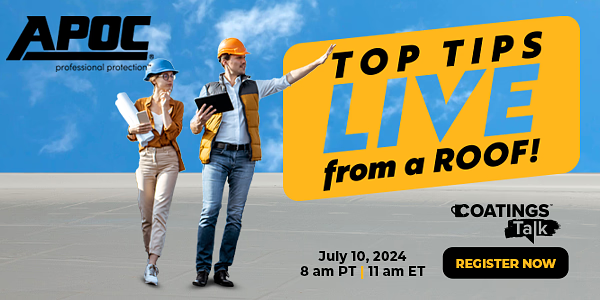
Top Tips LIVE From a ROOF! - PODCAST TRANSCRIPT
Read More ...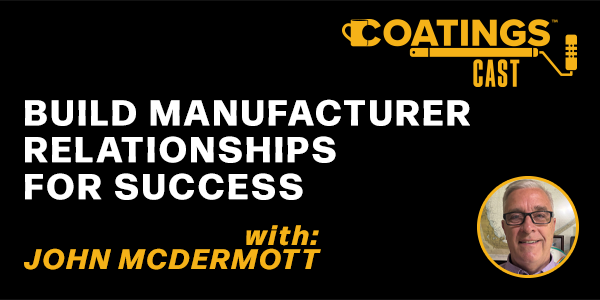
Build Manufacturer Relationships for Success - PODCAST TRANSCRIPT
Read More ...

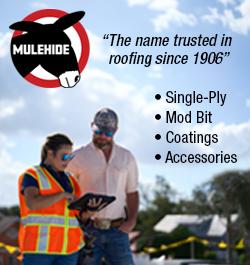

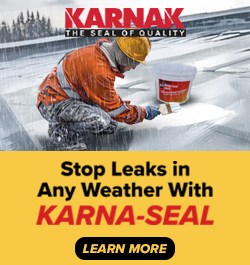





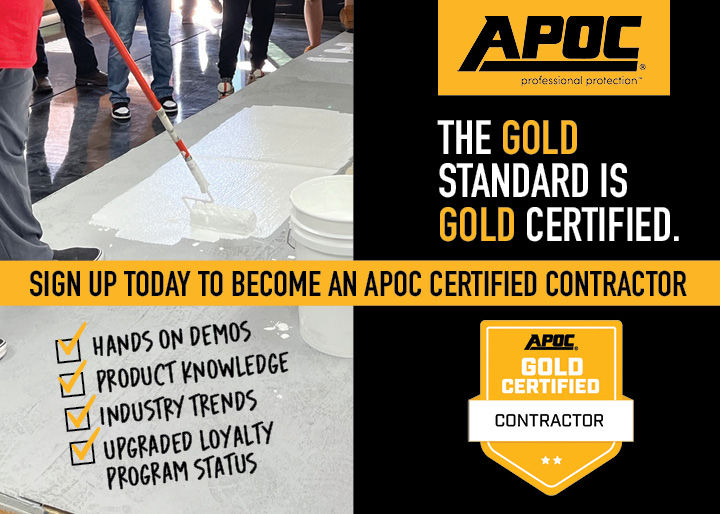

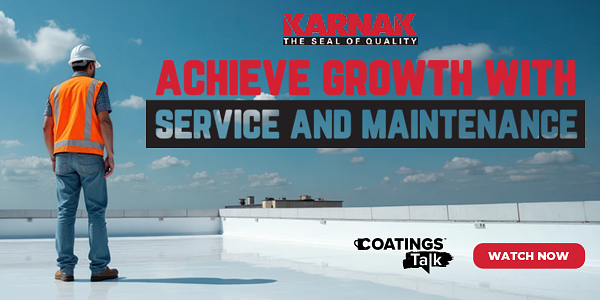




Comments
Leave a Reply
Have an account? Login to leave a comment!
Sign In